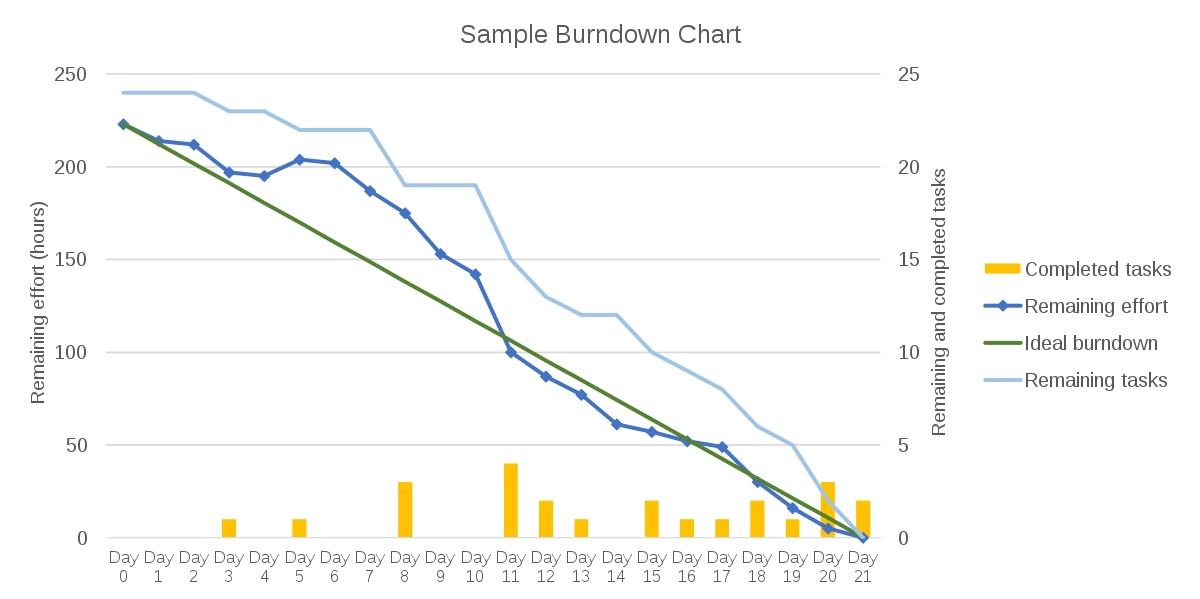Software development is a challenging and complex endeavor. Without proper planning, the process can be highly frustrating for stakeholders, product managers, and developers. Agile software development, Scrum, continuous integration, and other strategies have dramatically improved the landscape, but many common problems still arise.
Let's take a look at three common issues that derail software projects and how to mitigate them.
Scope creep, tech stack issues, and poor project management are three leading causes of tension on software teams—here's how to overcome these challenges and improve. Share on X#1. Scope Creep
Imagine that you're building a treehouse during the summer. After making the floor, you decide to add windows to the walls and a deck along the sides. Unfortunately, these additions push the project beyond your original budget and timeframe. Now, you might not have time to finish the project before winter, and worse, there's no money left for a roof.
Scope creep occurs when a project (or sprint) plan expands to include new features. Like the treehouse, these new features make it harder to deliver on time and budget. If time or budget runs out, scope creep can even lead to outright failure. In fact, many early-stage startups fail because scope creep leads to endless launch delays.
Several things can lead to scope creep:
- The market changes and requires different features.
- User feedback suggests a feature needs to change.
- Developers face unexpected complexity during implementation.
- There was a poor understanding of the original project scope.
You can prevent scope creep through measurement and mitigation.
Start by measuring scope creep with sprint burndown charts. When burndown charts don't follow the guideline, it's clear that something has gone wrong. Next, take the time to understand what's causing the scope creep (e.g., a lack of communication or understanding) and then take steps to mitigate any current and future problems.

Example of a burndown chart showing process. Source: Wikipedia
Improving communication is the most effective way to mitigate scope creep. For example, you might use behavior-driven development, or BDD, to enhance communication between business and technical teams. At its core, BDD involves the creation of concise examples that describe behavior and eventually become executable tests.
#2. Tech Stack Issues
Suppose that you want to build a custom CRM solution. You could make it using an established monolithic framework, use a bleeding-edge JavaScript framework, or even stitch together microservices. While it's possible to build the CRM using any of these tech stacks, there are significant trade-offs to consider with each option.
Some important considerations include:
- Ease-of-Use
- Maintainability
- Performance
- Stability
- Scalability
- Security
Of course, there's not a single solution that's right for every project. For example, projects with millions of concurrent users may need to prioritize scalability over ease of use, healthcare or banking applications may need to prioritize security over performance, and startups may prioritize ease of use to build something as quickly as possible.
In addition to choosing a tech stack, many projects rely on third-party dependencies. These dependencies might include libraries to handle things like authentication or APIs that power mission-critical functionality. As a result, teams must make difficult trade-offs when choosing dependencies while maintaining them over time.
You can avoid tech stack issues by taking the time to find the best option for your project (and avoid using "the next big thing"). In general, try to choose the most straightforward option for the most likely use cases. In other words, don't choose a complex tech stack in anticipation of distant use cases that may or may not come about.
#3. Poor Project Management
Manufacturing companies tend to focus on predictability and efficiency. In simple terms, they strive to produce highly consistent products at the lowest possible cost. While these dynamics are ideal for cars and shoes, software development requires a very different mindset. And unfortunately, many project managers lack the proper perspective.
Agile software development focuses on learning and adaptation over predictability and efficiency. Unlike manufacturing, companies cannot throw more resources into development and automatically expect a better or faster outcome. Instead, successful companies promote clear communication and maximize code quality over quantity.
Project managers can improve in several ways:
- Don't focus too much on conventional productivity metrics, such as lines of code (LOC output) or work hours. Instead, focus on the velocity at which the team launches business features.
- Focus on clear communication rather than adding new developers to speed up development. If you need more resources, hire senior engineers that can help improve code quality.
- Spend most of your time clearing barriers for developers. If there's something simple holding up development, try to take care of it as quickly as possible to keep everyone on track.
Most successful software development teams use the Agile methodology with Scrum to maximize output. In addition to focusing on business outcomes, daily stand-ups, having well-designed job stories or user stories and other scrum activities ensure that there aren't any hidden barriers holding up development. And retrospectives help the team constantly improve over time.
The Bottom Line
Many things can derail a software project, but scope creep, tech stack issues, and poor project management are three significant challenges. Fortunately, you can overcome these challenges with simple steps to improve communication, reduce complexity, and ensure that your team is happy and productive.
If you're experiencing any of these issues, Sharkbyte can help provide a high-quality roadmap to optimize your tech stack and eliminate scope creep. And, if you need more help, we provide team augmentation services to help get your development on track. Contact us for a free consultation and learn more about how we can help!



